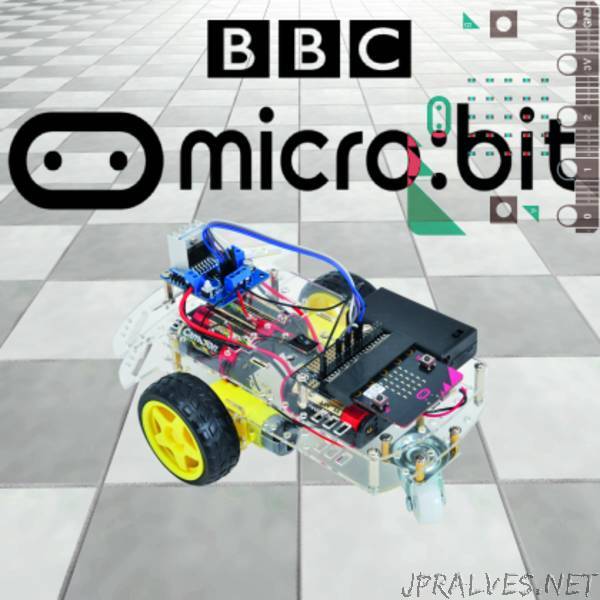
“It is a newborn board, but it is rapidly growing in popularity thanks to the potential we are going to show you through the project of a robot on wheel that can be controlled by a smartphone via Bluetooth.
micro:bit is a small but solid and powerful prototyping board designed by no other than BBC (the English broadcaster), that can be easily programmed from a personal computer; besides the microcontroller which represents its core, it has onboard sensors such as accelerometer, compass and a small “display” composed of a 5 x 5 LED matrix. The small board has built-in 2.4 GHz wireless Bluetooth LE connectivity, implemented thanks to a dedicated transceiver and a proprietary protocol, besides an antenna integrated into the PCB. By combining the ease of use of micro:bit and a motor controller, in this article we are going to show you how to create a robot on wheels that can be controlled through an application from your smartphone using the onboard low-energy Bluetooth link. For a start, we must mention the origins and structure of micro:bit. The micro:bit project micro:bit (http://microbit.org/) is the mind child of BBC, promoter and coordinator (with the nonprofit goal to provide kids and students with a platform to easily learn the basics of programming…), and it is also supported by several partner companies, each providing a portion of the onboard components; among these companies we can find ARM (providing the processor and owner of the known architecture), Freescale (providing the sensors), Nordic Semiconductor (providing the transceiver and Bluetooth controller), Samsung and others.
The onboard sensors allow developing various applications, such as IoT and wearable electronics applications. The sensors are connected to the main controller through the I²C bus connected on the P19 (SCL and P20 (SDA) pins on the GPIO comb connector (with direct insertion).
The magnetometer can generate an interrupt towards the main processor while the accelerometer can generate two different interrupts towards the main processor. The latter, a nRF51, also includes a temperature sensor.”
